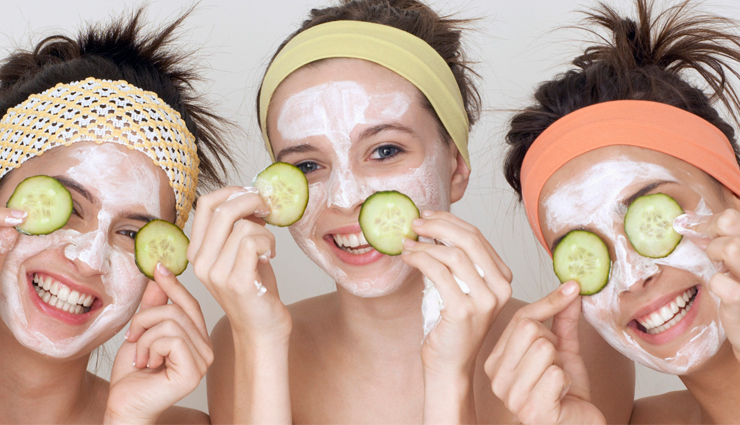Understand The Difference Between Between Face Pack And Face Mask
By: Kratika Maheshwari Thu, 15 Oct 2020 2:20:22

We all have used face packs and face masks a lot but have we ever thought about the difference between the two. These sound almost the same but there is a lot of difference. Let’s talk about that today.
There are many differences but the main one is that the face mask is a setting mask, while the face pack falls under the category of non-setting masks. A non-setting mask is one that does not require a lot of time to settle or dry, you can just apply it to your skin and rinse off the residue. A setting mask, on the other hand, requires a bit of time to harden on your skin or these may not harden, so you can later peel it off or wash it off along with the impurities it picks up off your skin. It is absolutely important to incorporate both in your skin regimen.
Both mask and pack have their own benefits. Just keep in mind masks take time on the other hand packs dry off quickly. Masks mostly have clay as their main ingredient whereas in a pack the ingredient you choose for your skin type becomes the main ingredient.

How a face pack helps us
Face packs are made up of ingredients such as Aloe vera, lavender, and fenugreek that penetrate the skin for instant results and that’s why it falls under the “non-setting” category. Face packs cleanse and tone the skin, and you can make them at home if you don’t want to spend money. Some popular face packs you can create out of ingredients you have in your kitchen, for example, sugar and cucumber, Gram flour and curd, Lemon and honey, Honey and egg, Rosewater and sandalwood, Banana, Tomato Pulp, Honey and milk, Turmeric and mint, Lemon and strawberry. These are some classic combinations which help in thorough skin cleansing.

How a face mask helps us
Face masks treat sensitive, dehydrated, red, dry or oily skin. They stay on the skin for between 10 and 15 minutes aka a setting mask and are made up of ingredients such as seaweed, clay, algae, aloe vera, black moor mud, vitamins, and herbs. Depending on their ingredients, face masks will do one or a combination of the following that is hydrate, nourish the skin, improve tone, tighten, speed up the healing process for blemishes, squeeze out impurities, rejuvenate or soothe skin. There is also a misconception that clay is the only type of face mask but there are many types of masks

- Natural masks: Herbs, plants, and fruits are some of the ingredients intact with the rejuvenating properties.They revitalize dry and brittle skin.
- Cream masks: They are made up of emollient properties that soften the skin. They do wonders for dry skin.
- Thermal masks: Once you apply a thermal mask to the skin, they slowly heat up. They open up the skin pores so the skin can breathe by warming up the surface tissue and this also removes blackheads.

- Peel-off masks: They are available in paraffin wax, plastic or gel-like substances. Some are used to stimulate the blood, and others temporarily tighten the skin. They are great for dry or mature skin.
- Clay masks: These are quite well known; they contain natural clay substances. These are great if you’ve got oily skin because they absorb all that grease without stripping the skin of its natural oils.
- Warm oil masks: Warm oil masks are made up of vitamin oil, olive oil or almond oil. They increase blood circulation to the skin which makes it smooth and soft. Warm oil masks are fantastic for dry skin.





